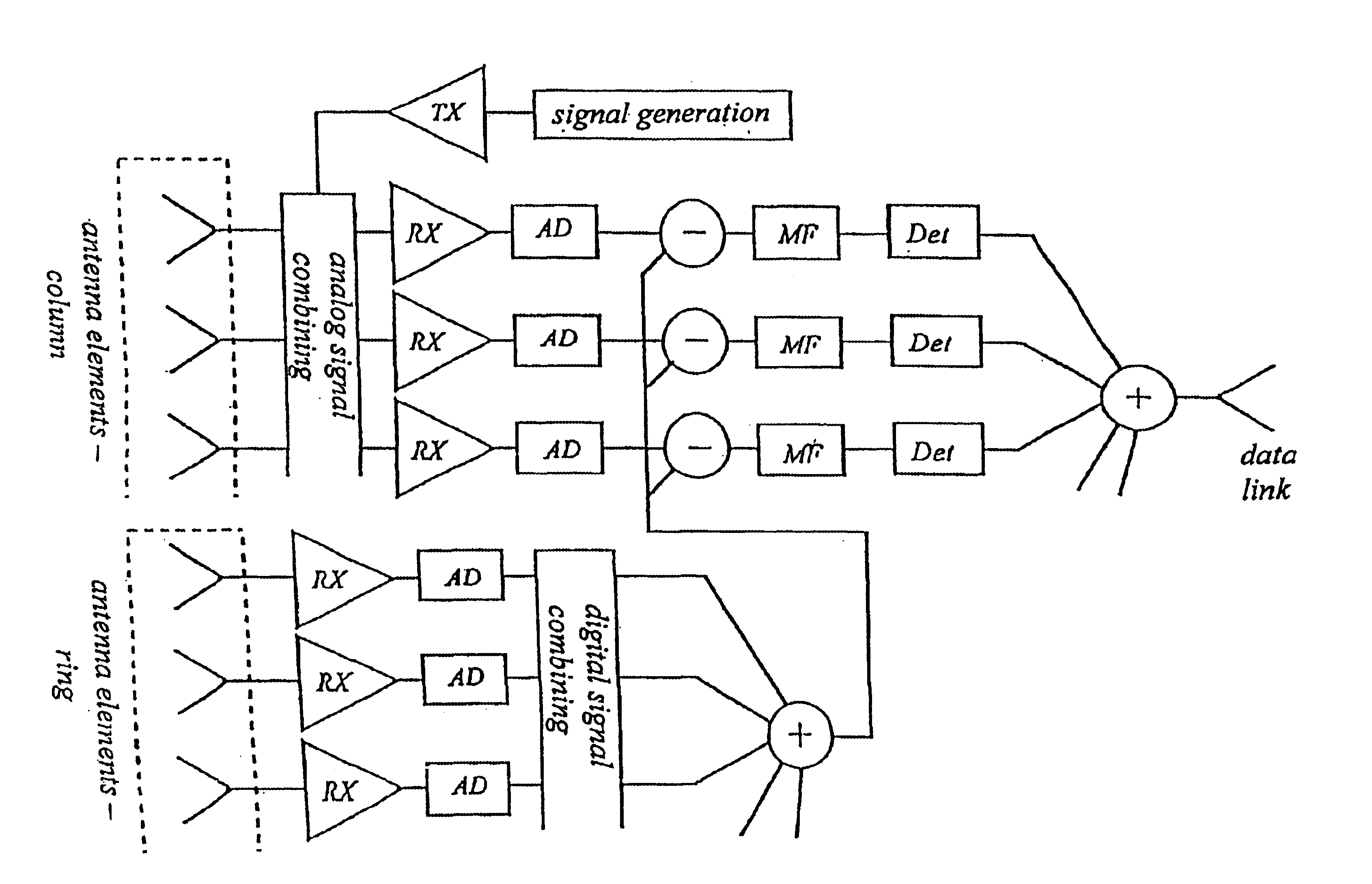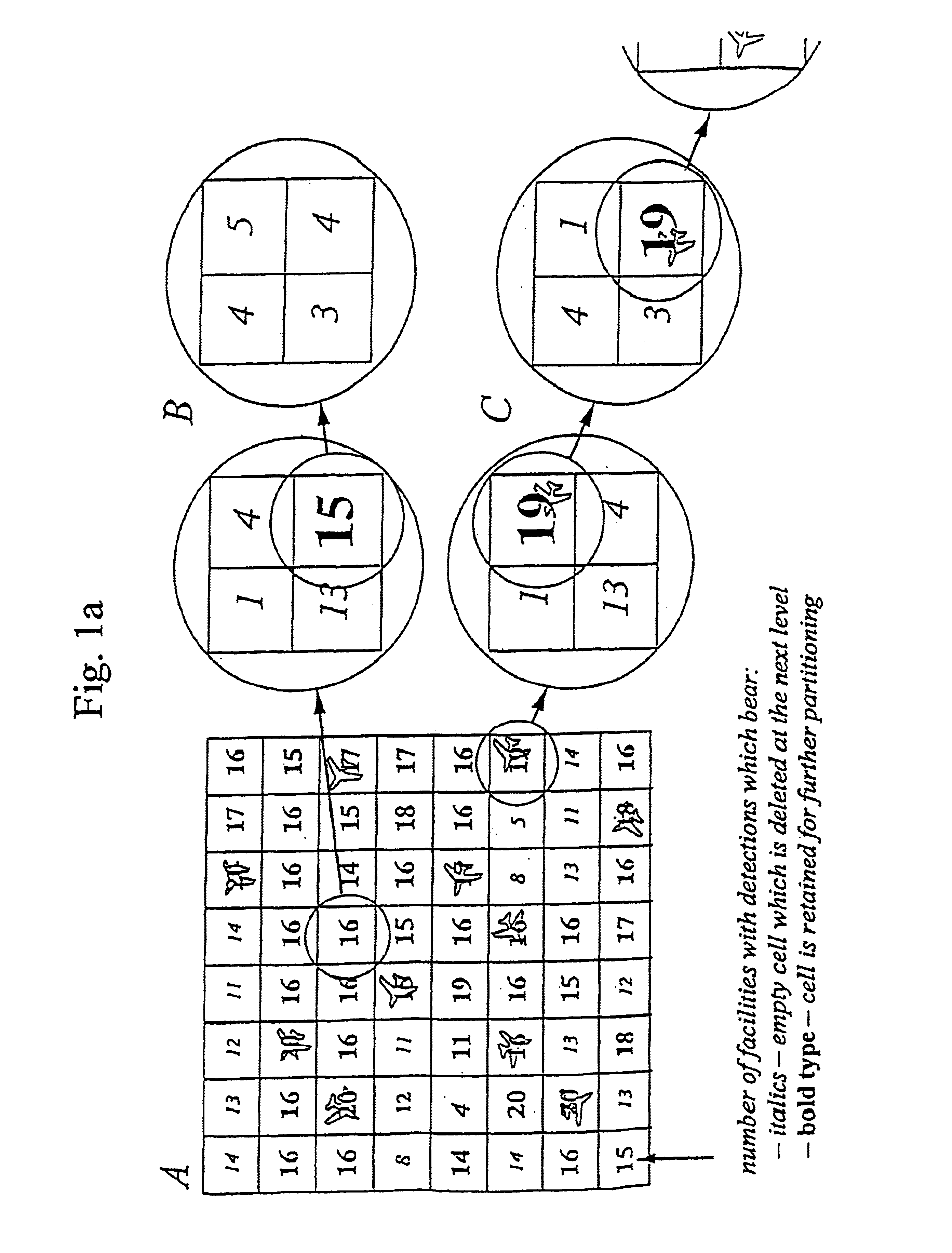System for determining position and velocity of targets from signals scattered by the targets
a target position and target technology, applied in the field of system for determining the position and velocity of targets from signals scattered by targets, can solve the problems of insufficient four measurement geometries and the simultaneous presence of several targets, and achieve the effect of improving the situation and being easy to transpor
- Summary
- Abstract
- Description
- Claims
- Application Information
AI Technical Summary
Benefits of technology
Problems solved by technology
Method used
Image
Examples
Embodiment Construction
The system basically consists of a number of transmitters and receivers dispersed to known points in a position space, as well as analysis equipment. The system can, as stated, work with electromagnetic or acoustic signals. A conventional radar is mono-static, which means that the transmitter and receiver pair is located together. If they are spatially separated, however, the equipment is called bi-static. In the system it is expected that measurements can be made bi-statically and as well mono-statically. In the following a pair of a receiver RCVR and a transmitter XR, regardless of whether the measurement is bi-static or mono-static, is called a measurement facility.
The analysis equipment determines the instant for sending signals, and received signals are parameterised as a function of path of propagation and change in path of propagation between transmission point and reception point according to established principles for radar. Change in path of propagation is approximated thr...
PUM
 Login to View More
Login to View More Abstract
Description
Claims
Application Information
 Login to View More
Login to View More - R&D
- Intellectual Property
- Life Sciences
- Materials
- Tech Scout
- Unparalleled Data Quality
- Higher Quality Content
- 60% Fewer Hallucinations
Browse by: Latest US Patents, China's latest patents, Technical Efficacy Thesaurus, Application Domain, Technology Topic, Popular Technical Reports.
© 2025 PatSnap. All rights reserved.Legal|Privacy policy|Modern Slavery Act Transparency Statement|Sitemap|About US| Contact US: help@patsnap.com



